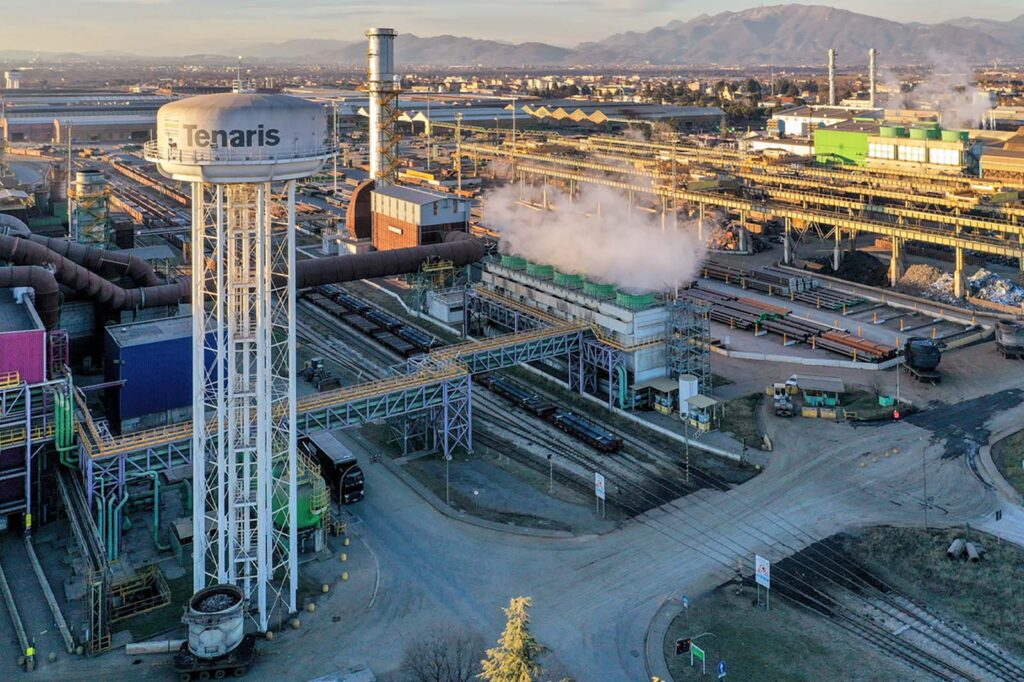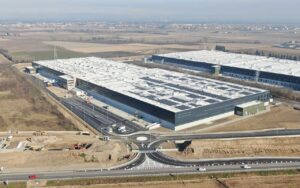
The company
Tenaris Dalmine – Tenaris’s operational headquarters in Italy – is the first Italian manufacturer of seamless steel tubes for the energy industry, automotive and mechanics, with an annual production capacity of 950,000 tons of finished products, over 3,000 employees and 5 factories in Italy.
The needs
Tenaris Dalmine has decided to install a new energy monitoring system with the primary purpose of having a tool capable of providing precise indications for the optimization of consumption within a complex distribution structure and a stratified organization.
The main needs expressed concerned the reliability of the system both in terms of the quality of the data collected by the individual counters and in terms of network analysis in order to highlight any inconsistencies in the distribution network.
A second requirement concerned the complete integration of the management and analysis tools of the energy monitoring system with the web datawarehousing applications used by Tenaris Dalmine for the control of industrial processes.
The main critical issues that emerged during the development of the project were the need to have high reliability of the counters data – even in conditions of maintenance or malfunction of the computer networks – and the strong integration with the Mes environment for the management of Tenaris Dalmine production with the purpose of correlating energy information to productive information.
The solution
In the preliminary phase of the SET project, it contributed to the definition of the system specifications, in particular as regards the choice of methods for acquiring consumption information; two integrative solutions were chosen:
- with regard to the main counters of the electricity distribution cabins (where a high accuracy of the measurement is required), it was decided to use Schneider smart meters capable of maintaining historical information for a period of over a month and to communicate on an Ethernet network;
- as regards the remaining electricity counters and the meters of other energies and utilities it was decided to use pulse meters connected to Siemens PLCs equipped with a program capable of maintaining the counting information for a period of one week.
The acquisition of energy measures
As for the acquisition of consumption a distributed software structure was chosen and fully configurable in which it is possible to define the network nodes (PLC, Schneider concentrators) responsible for the acquisition and within these the individual meters; the PLC acquisition software has been structured in a completely modular way so that configuration changes require minimal intervention on the acquisition system. The acquisition system has been equipped with advanced diagnostic functions in order to immediately highlight any acquisition problems and to be notified by e-mail to those responsible for maintenance and management of the system.
Processing and monitoring
The acquired data are subjected to a processing process that contextualizes them in the architecture of the distribution network in which each individual counters is inserted. The use of virtual counters (sum, alias, quadrature, combination, offset, …) has allowed the complete description of trees and distribution graphs, allowing very sophisticated network control functions. In particular, the control of the undistributed (defined as the difference between the consumption of a network level and the general counter to which the level refers) has been found to be a fundamental element for checking the reliability of the system, highlighting errors in the configuration of the meters and possible losses on the distribution network.
Energy analysis and datawarehousing
The consumption analysis environment on the company intranet was structured on a set of reports organized by type of energy and able to provide multifaceted information:
- analysis of individual real or virtual counters representing departments and plant areas, study of trends over time, acquisition diagnostics and the ability to manage any acquisition gaps;
- analysis of the networks to highlight the branches in which the information is not consistent;
- analysis of consumption and energy efficiency of specific machines, particularly relevant for energy aspects (furnaces, rolling mills);
- energy transformation analysis (production of forms of secondary energy – compressed air, steam – using primary energies);
- industrial cost analysis; distribution of the values of the individual counters on one or more cost centers in order to obtain precise information on consumption and on the method of composing costs for the different centers;
- comparative analysis tools for comparing different time periods and for defining the consumption forecast for future periods;
- tools for correlating consumption with production orders, tools for analyzing specific consumption per ton of steel produced;
- analysis tools for the formulation of plant management hypotheses that comply with the contractual consumption limits stipulated with the different energy suppliers.
The benefits
- increase in the reliability of the information acquired thanks to network comparison tools and diagnostics;
- improvement of the maintainability of the system thanks to the use of standard devices (PLC) for the acquisition of consumption;
- optimization of consumption (especially of methane) thanks to the analysis tools that have highlighted possible different ways of running the plants.

Tenaris Dalmine S.p.A.
- » Industry 4.0 software solutions
- » Project solutions
- » Iron and steel industry






